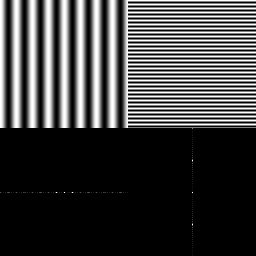This forum is disabled, please visit https://forum.opencv.org
 | 1 | initial version |
Well, the Fourier transform totally transforms your image. It will become a frequency-domain representation of the matrix. So each pixel in the Fourier domain will represent the presence and amplitude of a certain frequency.
To understand it better, try to understand first the 1 dimensional case. The spectrum analyzer of your music player presents the Fourier transform of the music. The different bars don't correspond to the music samples, rather the different frequencies (lows, mids, highs).
It's similar for the images; only you get a 2d result. An image with a uniform color will give a single pixel (the 0 frequency) in the Fourier domain. A horizontal sinusoidal wave pattern with a frequency of 10 pixels will give some peaks on the horizontal axis at the pixel corresponding to this frequency and its multiples.

Anyway, the Fourier transform has a lot of interesting properties (e.g. it allows a very efficient image compression - the JPG format uses a very similar method to compress the images with a very low loss), so I recommend to read the documentation for a more in-depth understanding.